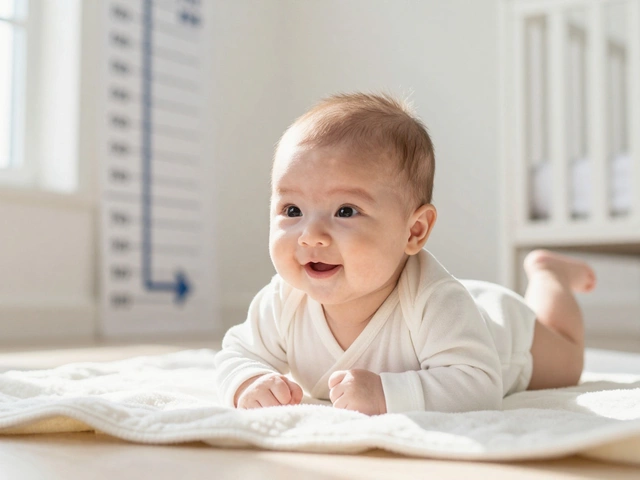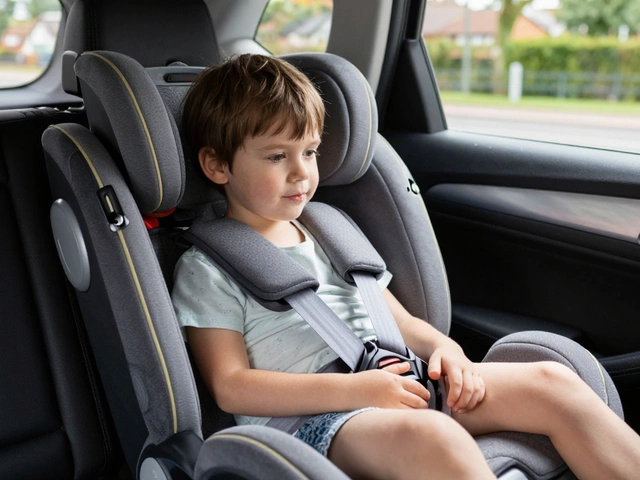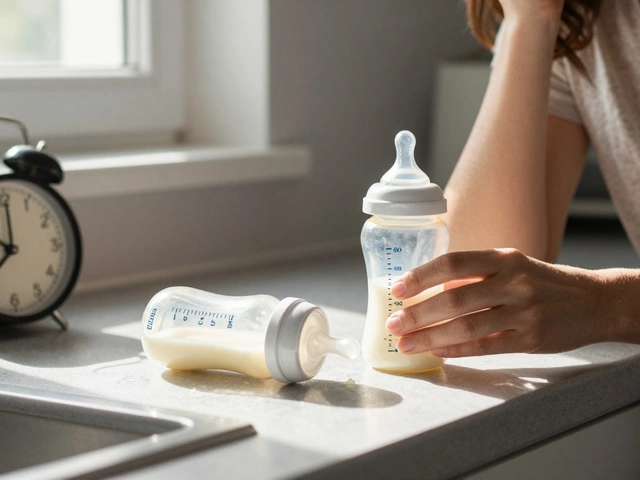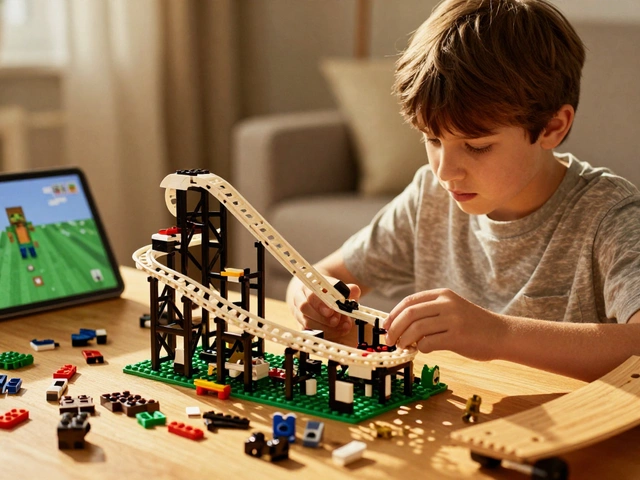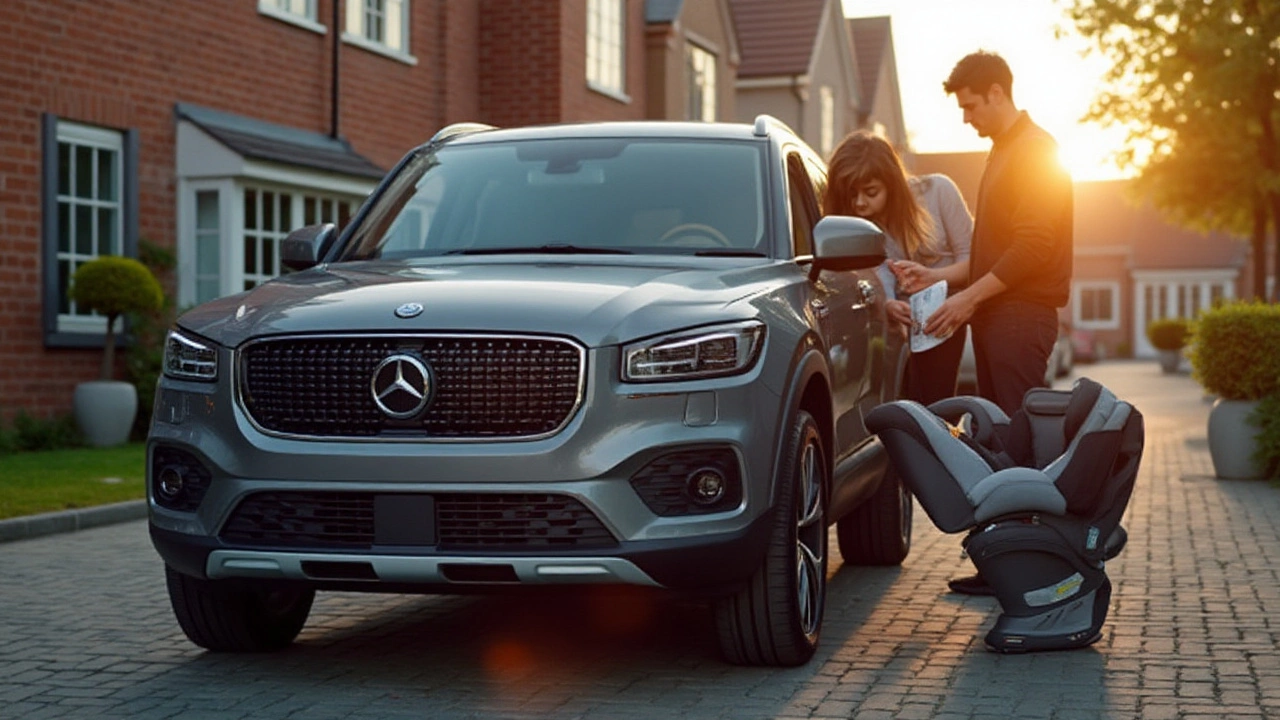
In the ever-evolving world of automotive accessories, car seats stand out as essential for ensuring the safety and comfort of young passengers. However, one size doesn't always fit all when it comes to pairing car seats with vehicles. Differences in car seat designs and the varying configurations of cars mean that finding the right fit can sometimes feel like solving a puzzle.
This article aims to shed light on the complexities involved in car seat fitting and offer guidance to ensure your little one travels securely. From navigating vehicle specifications to choosing the right seat for your child's age and size, we cover the key considerations parents need to be aware of. Let's embark on a journey to make your car a safe haven for your child, starting with the right seat choice.
- Understanding Car Seat Compatibility
- Common Challenges with Car Seat Fitting
- Tips for Choosing the Right Seat
- Installation and Safety Considerations
Understanding Car Seat Compatibility
Navigating the intricacies of car seat compatibility can feel like a labyrinth for many parents. The first step in this journey is recognizing that not all car seats fit in every vehicle with the same ease. Numerous factors such as the shape, size, and layout of both the car seat and the vehicle play a crucial role. While most car seats are designed to fit the majority of cars, the level of fitment varies hugely, affecting both comfort and safety standards. One of the first and most prominent considerations is the type of seat—be it an infant, convertible, or booster seat—as each style has its own specifications and limitations.
To delve into the specifics, many manufacturers offer sizing charts that align with vehicle models, simplifying the purchasing process. An often overlooked but vital aspect is the vehicle compatibility based on the make and model. Larger cars generally offer more flexibility in terms of space, but smaller vehicles might impose restrictions due to limited backseat space or lower rooflines. The introduction of ISOFIX, a standardized fitting system, has simplified this somewhat, providing a reliable anchor point in many modern cars. However, it's important to note that ISOFIX systems, while reducing improper installation, still require a thorough check for compatibility with your specific vehicle. An interesting fact is that despite stringent guidelines and norms laid out by safety regulatory agencies, up to 76% of car seats are installed incorrectly, according to the National Highway Traffic Safety Administration (NHTSA).
"A good fit between the car seat and the vehicle is essential—not just for convenience, but for maximizing protection during travel," says Susan Connors, an automotive safety expert at the Child Passenger Safety Institute.
Another layer of complexity comes with the advent of newer vehicle technologies, creating a scenario where older model car seats may not snugly align with state-of-the-art vehicle designs. It is often beneficial to conduct a test fitting before committing to a purchase. Many retailers offer this service, allowing potential buyers to try car seats in their vehicles with the assistance of trained staff or technicians proficient in child safety. Special attention should also be given to vehicles with unique seating designs, such as those with deep bucket seats or unconventional seat belt anchor points, as these can significantly alter the effectiveness of standard car seats.
Design and Adjustability
Delving deeper into design, car seats vary greatly in terms of adjustability, often vital for ensuring a good fit. Adjustable bases, reclining features, and extendable headrests all contribute to this aspect. Convertible car seats, favored for their long-term usability, particularly demand scrutiny, as they aim to accommodate children through multiple growth stages. Incorporating an intuitive design that permits easy alterations for both rear-facing and forward-facing setups is key. Notably, these adjustable features are not universal across all vehicle models. Certain vehicles come equipped with tether anchors and other adjustments that can either positively or negatively impact the installation and securement of a child safety seat.
Finally, local regulations and laws offer another layer of guidelines that influence what constitutes a 'compatible' car seat. It’s vital not only to consult your vehicle’s manual but also your car seat’s guidelines to envelope the largest spectrum of safety and comfort. Armed with this knowledge, parents can make informed decisions that prioritize safety without compromising on comfort and usability.
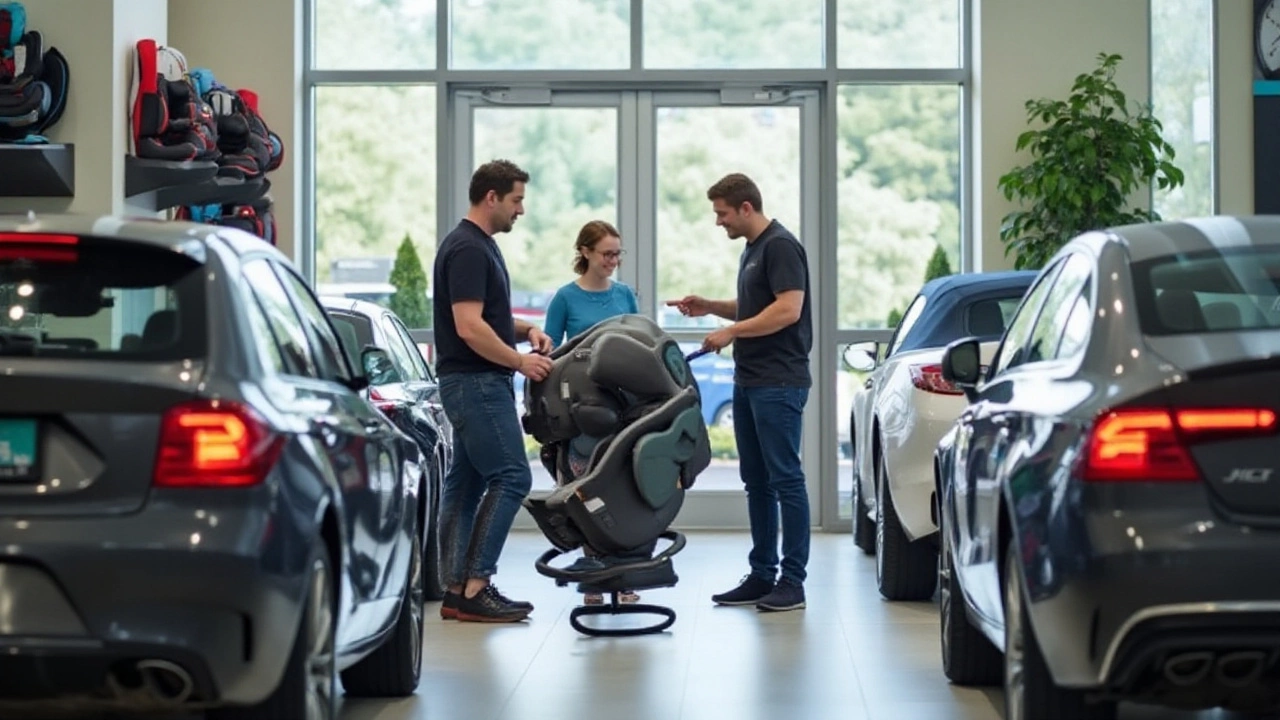
Common Challenges with Car Seat Fitting
Finding the perfect fit for a car seat often presents a unique set of challenges, particularly for parents navigating this path for the first time. One of the primary hurdles is the variation in car interiors. Car models come in all shapes and sizes, from compact sedans to SUVs, each with its distinct back seat design. These variations can affect the alignment and angle at which a car seat rests, making it difficult to achieve a secure fit. For instance, some vehicles have seats with prominent contours or heavily padded cushions, which can impede the installation of certain car seat models. Parents may find themselves contending with a slippery seat base or a belt that doesn't snugly fit, both of which compromise the seat’s stability.
Another frequent issue involves the tether points and LATCH (Lower Anchors and Tethers for Children) systems. While most modern cars are equipped with LATCH, their placement isn't standardized, which can lead to confusion and improper installations. The depth and accessibility of these anchors play a significant role in how securely the seat is fastened. Not every car seat is compatible with every LATCH system, and some parents struggle to maintain a level base in their attempt to connect these anchoring points, highlighting the need for intuitive design improvements. Consequently, misuse and incorrect fastening remain leading causes of child safety risks.
"It's astonishing to learn that nearly half of all car seats are improperly installed," remarks Sarah Tilton, Britax Child Safety Advocate. "Parents need clear guidelines and support to avoid such potentially dangerous setups."
Moreover, the increase in multi-purpose seating, such as foldable, split, or third-row options in vehicles, poses additional challenges. These flexible designs can interfere with the stability of a car seat placed at certain positions within the car. For instance, the split in a folding seat may cause a car seat to tilt or move unexpectedly, raising safety concerns. The dynamic nature of transportation habits means families need adaptable solutions that can easily transition between different configurations without compromising safety.
Choosing the right car seat then becomes part science and part art. Being aware of your car’s specific spatial and structural limitations can help parents select a car seat tailored to fit these constraints. Many manufacturers are now including compatibility checks, indicating which vehicles their products fit best. Parents are encouraged to perform a trial installation before purchase when possible to ensure the car seat functions as intended. This trial run not only helps with fit but also familiarizes users with the installation process, reducing chances of error once the seat is used for real.
Additionally, reading through customer reviews and consulting with child safety seat technicians can provide much-needed guidance. Parents sharing similar vehicle models often offer insights that are not covered in a car seat's manual, offering tips based on real-world experiences. As every car and car seat setup can be so different, pooling community knowledge can prove invaluable. This collective wisdom can often spotlight specific models or techniques that work particularly well in cars similar to yours, ensuring both ease of use and safety for your little one.
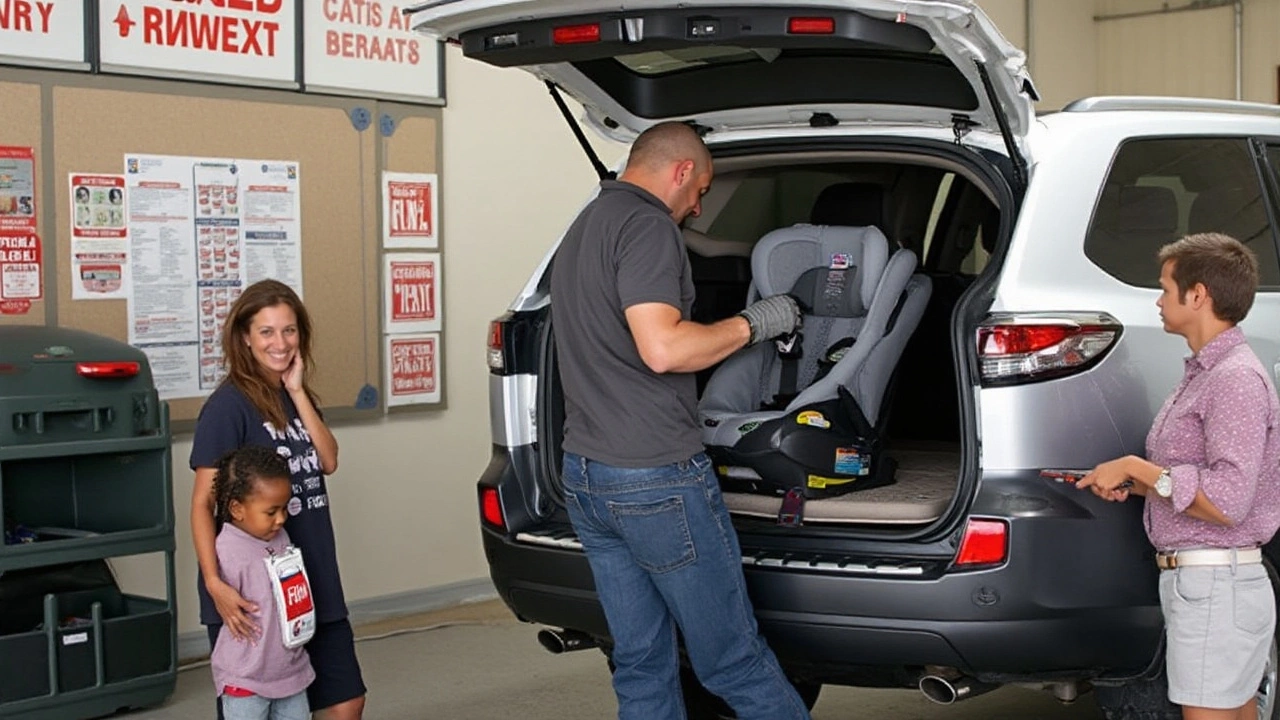
Tips for Choosing the Right Seat
Finding the right car seat for your vehicle involves a blend of understanding safety standards, checking compatibility, and assessing your personal needs. With a myriad of options available, it can be challenging to narrow down the choices. First and foremost, prioritize seats that have passed rigorous safety tests. This means looking for labels or certification marks like the ECE R44/04 or the newer R129 (i-SIZE) standard in Europe, which ensures the seat meets the highest safety requirements.
Next, take into account your vehicle's compatibility with potential car seats. Different cars have different configurations, and not all seats will fit every model. It’s a good idea to use the car seat manufacturer's compatibility checker or visit a retailer for a hands-on test. Remember that seats come in various sizes and designs—some are bulkier due to added safety features, while others provide a snug fit without sacrificing security. Knowing your car's interior space, particularly in the backseat, will help you gauge the right model.
Consider your child's age, height, and weight when selecting a seat. This might seem obvious, but buying adjustable models can offer longevity and adapt to your child's growth. This becomes a cost-effective choice since such seats can transition between stages like from a rear-facing to a forward-facing seat, eventually becoming a booster. A study by the National Highway Traffic Safety Administration found that about 59% of car seats are not installed correctly, underscoring the importance of choosing a seat that you can easily and securely install.
“Choosing the right car seat is not just about comfort or style. It’s about selecting a seat that fits your child and your vehicle like a glove,” emphasized a safety expert from the latest road safety convention.
Do not overlook the seat's ease of use. Opt for a model with clear instructions and straightforward installation processes. Many parents face frustrations with complex designs and hard-to-follow guidelines. Some seats offer features such as harness systems that don’t require re-threading as your child grows, and bases that click into place with an audible indicator, giving you peace of mind with every journey.
If you are budget-conscious, don’t compromise on safety features for aesthetic upgrades. But there's no harm in considering car seats that offer additional extras such as washable covers to make cleaning easier, built-in cup holders, or storage compartments for toys and snacks. In the end, focus heavily on acquiring a seat that marries safety with functionality.
Here’s a quick comparison table of some popular car seat brands and their key features:
| Brand | Safety Standard | Installation Ease | Additional Features |
|---|---|---|---|
| MaxSecure | i-SIZE | Easy | Washable cover, cup holder |
| SafetyNest | ECE R44/04 | Moderate | Non-rethreading harness |
| TravelGuard | R129 | Challenging | Advanced side protection |
The key to success in selecting the right car seat lies in understanding the balance between safety, compatibility, and convenience. Arm yourself with information, ask questions, and don’t hesitate to seek professional help if you're uncertain. The right car seat does more than just shelter your child; it protects their future on every journey.

Installation and Safety Considerations
Installing a car seat properly is perhaps the most critical step when it comes to child safety in vehicles. It's not just about fitting the seat securely, but doing so in a way that maximizes protection. Start by carefully reading both the vehicle's manual and the car seat's instructions. These resources provide specific details about seat belt paths, the use of LATCH (Lower Anchors and Tethers for Children) systems, and the recommended angle for installation-based on the child's age and weight. Positioning is key, and for infants, this often means a rear-facing orientation until they exceed the manufacturer's weight limit. Did you know that research indicates rear-facing seats can reduce injury risk by more than 80% when correctly installed?
Pay attention to the angle at which the seat is installed. Most infant car seats come with an angle adjuster to ensure the seat rests at the correct recline, preventing the baby's head from tilting forward—a situation that can impair breathing. Properly tightened seat belts or LATCH straps should not allow more than an inch of movement side-to-side or front-to-back at the belt path. Employing the tether strap when using a forward-facing seat significantly increases stability. As car designs differ, it may sometimes be necessary to adjust the seat's position or change to a different anchor point for optimal security.
The National Highway Traffic Safety Administration (NHTSA) suggests that 'parents and caregivers should have their child's seat checked by a certified Child Passenger Safety Technician, which can drastically reduce the likelihood of installation errors.'
It’s also crucial to keep an eye on any recalls related to your car seat. Manufacturers may issue recalls if they identify potential safety risks. Registering your seat with the manufacturer ensures you receive notices promptly. Periodically inspect the seat's components, especially after installation, for signs of wear and tear such as frayed belts or loosened connecting parts. Remember, a damaged seat cannot perform its protective role effectively. Continued vigilance is necessary since temperatures inside vehicles fluctuate, which can affect material integrity over time, especially with safety buckles made of plastic.
In addition to the physical installation, make a habit of routinely securing the child in the seat harness correctly. The harness straps should sit snugly without slack, allowing just enough room for a single finger between the strap and the child's chest. The harness clip should be positioned at armpit level, keeping the straps in the proper position across the shoulders. Many parents inadvertently permit loose harness fitting, believing it provides comfort. Studies underscore, however, that a snug fit is more beneficial for safety during sudden stops or collisions.
Given advancements in technology, some modern vehicles and car seats come equipped with features designed to assist with proper installation. This might include built-in sensors that alert if the seat isn't securely fastened or apps that guide users through the installation process step-by-step. As these options become increasingly available, they offer peace of mind, particularly for new parents. Ensuring correct seat installation isn't a one-time task but a continual commitment to child safety on the road. Consider utilizing certified inspection stations, frequently offered by local police departments, which can verify the adequacy of installation.


